There are Thirty-Nine (39) good companion plants for green beans in this list and seven (7) Bad ones.
We have varieties of Companion plants for Green Beans that cut across Vegetables, Herbs, Flowers, and Trees, giving you many options to plant with your green beans. Before we dive into these plants, let us establish some facts about Green beans.
Green beans, also known as string beans, are a versatile and easy-to-grow vegetable that is popular worldwide. They come in a variety of types and can be harvested young for a sweet, crisp taste.
Green beans are loaded with fibre, vitamins, and minerals, making them a nutritious addition to any meal. They require well-drained soil and plenty of suns, and regular watering is necessary during hot and dry weather to prevent the pods from becoming tough and stringy.
Green beans also make great companions for other vegetables in the garden and attract beneficial insects like bees and butterflies.
However, they can be susceptible to pests and diseases, so it’s important to keep an eye out for any signs of trouble and take steps to prevent and treat them.
Table of Contents
Good Companion Plants for Green Beans
Vegetables
1. Broccoli
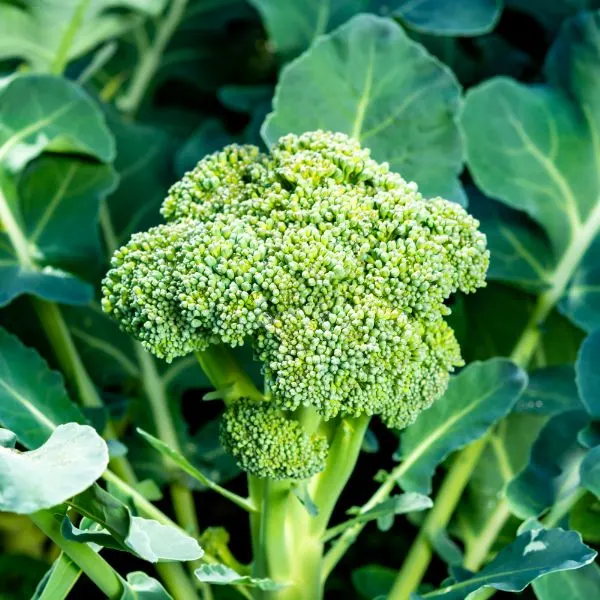
- Botanical name: Brassica oleracea var. Italica
- Sun Requirements: 6-8 hours of full sun per day
- Soil Type: Well-drained, fertile soil
Broccoli makes an excellent companion for green beans, attracting insects that prey on pests and having shallow roots that do not compete with the deep roots of green beans. Both plants have different nutrient needs, preventing nutrient depletion in the soil, while broccoli’s leaves provide shade to prevent sunscald on the pods.
2. Brussel Sprouts

- Botanical name: Brassica oleracea var. gemmifera
- Sun Requirements: 6-8 hours of full sun per day
- Soil Type: Well-drained, fertile soil
Brussels sprouts make an excellent companion for green beans, with similar growth habits and nutrient needs. They attract beneficial insects and help to shade each other, reducing soil moisture loss and preventing sunscald. Additionally, Brussels sprouts have a deep root system that helps to improve soil structure and prevent soil erosion.
3. Cabbage
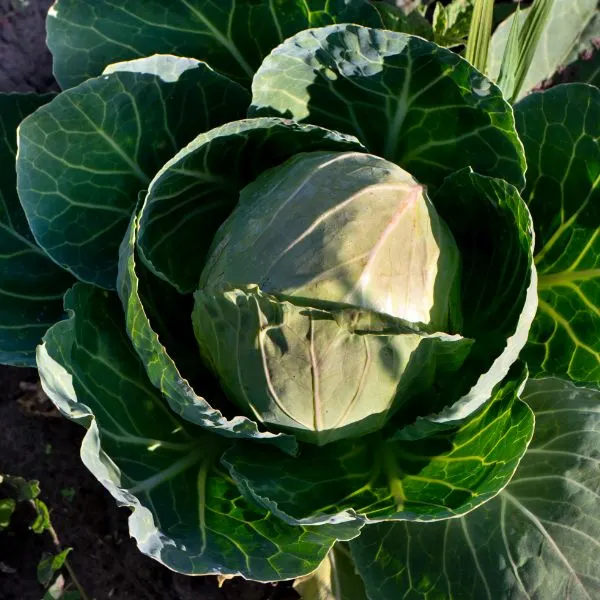
- Botanical name: Brassica oleracea var. botrytis
- Sun Requirements: 6-8 hours of full sun per day
- Soil Type: Well-drained, fertile soil
Cabbage can be a great companion plant for green beans due to its ability to attract beneficial insects and its shading effects. As members of the same family as broccoli and Brussels sprouts, cabbage also provides similar benefits, such as different nutrient needs to prevent soil depletion. Its large leaves help to prevent sunscald on green bean pods while attracting wasps and ladybugs to prey on pests.
4. Carrots
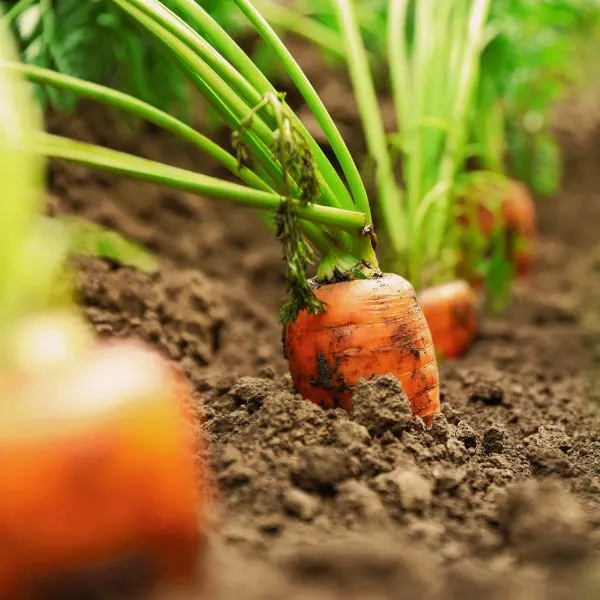
- Botanical name: Daucus carota
- Sun Requirements: 6-8 hours of full sun per day
- Soil Type: Loose, well-drained soil
Green beans and carrots make excellent companions in the garden due to their shallow roots, differing nutrient needs, and ability to attract beneficial insects. Carrots’ tall and slender structure provides shade to the green bean plants, which prevents sunscald on the pods. Additionally, carrots attract insects such as ladybugs and parasitic wasps that prey on pests harmful to green beans.
5. Cauliflower
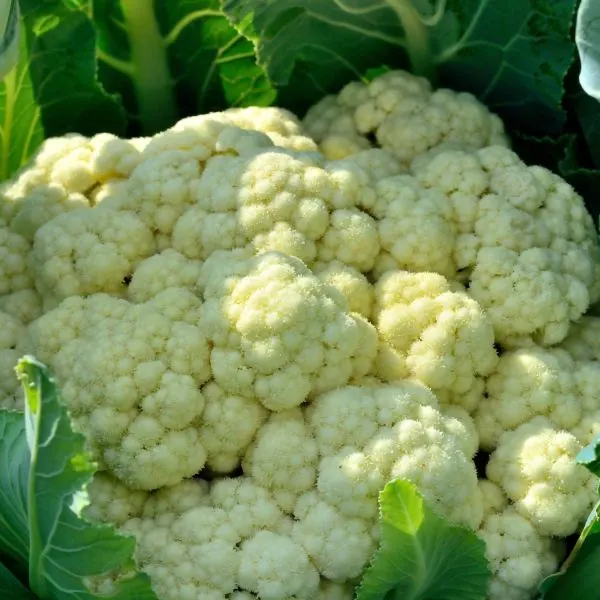
- Botanical name: Brassica oleracea
- Sun Requirements: 6-8 hours of full sun per day
- Soil Type: Rich, well-drained soil
Cauliflower makes a fantastic companion for green beans due to its shallow roots that do not compete with green beans’ deep roots. The plants have different nutrient needs, preventing soil depletion, and cauliflower attracts beneficial insects like ladybugs and lacewings that prey on green bean pests. Additionally, the plants’ shade reduces soil moisture loss and prevents sunscald on the green bean pods.
6. Celery

- Botanical name: Apium graveolens
- Sun Requirements: 6-8 hours of full sun per day
- Soil Type: Rich, well-drained soil
Celery is a great companion plant for green beans. Its strong scent helps repel pests, including aphids and carrot flies. Celery’s deep roots help loosen the soil, making it easier for the roots of green beans to access nutrients. When grown together, celery and green beans can provide support for each other, with celery providing shade to the beans during hot months.
7. Corn
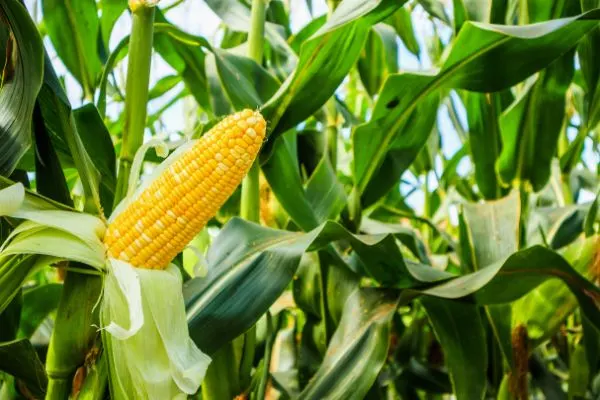
- Botanical name: Zea mays
- Sun Requirements: 6-8 hours of full sun per day
- Soil Type: Well-drained, fertile soil
Corn is a great companion for green beans, as it can provide a natural trellis for the climbing green beans and reduce the amount of space they need on the ground. The beans can fix nitrogen in the soil, benefiting the corn, and the two plants have different root depths, which can help prevent competition for nutrients.
8. Cucumbers
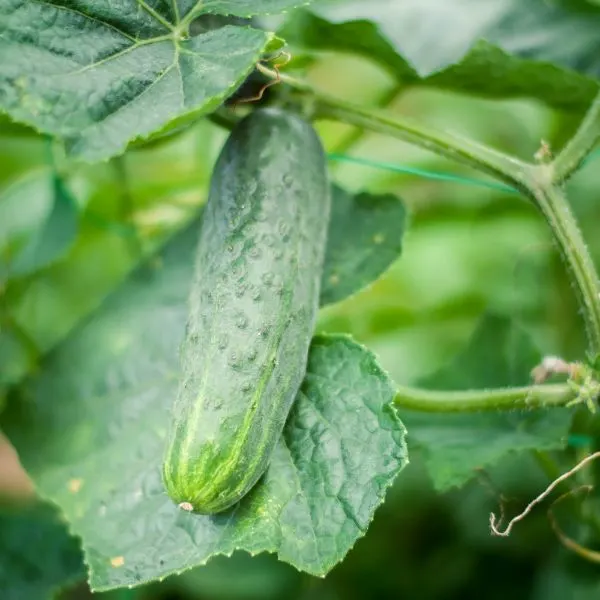
- Botanical name: Cucumis sativus
- Sun Requirements: 6-8 hours of full sun per day
- Soil Type: Well-drained, fertile soil
Cucumbers and green beans are complementary garden companions, with different root depths and cucumber’s pest-repelling properties. The plants can share the same space without competition for nutrients, and green beans can provide the necessary support for cucumber vines.
9. Eggplants
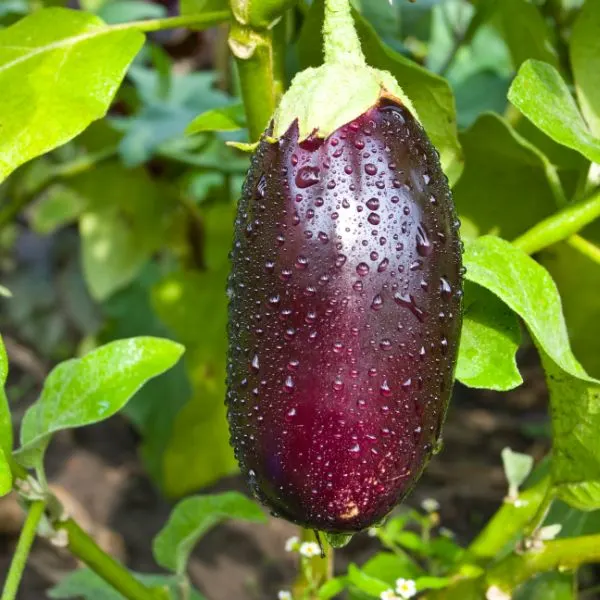
- Botanical name: Solanum melongena
- Sun Requirements: 6-8 hours of full sun per day
- Soil Type: Well-drained, fertile soil
Eggplants and green beans are beneficial companions in the garden. Both plants require similar nutrients, and eggplants have a natural resistance to pests harmful to green beans. The shade provided by the large leaves of eggplants can help keep the soil cool, benefiting the shallow roots of green beans.
10. Kale
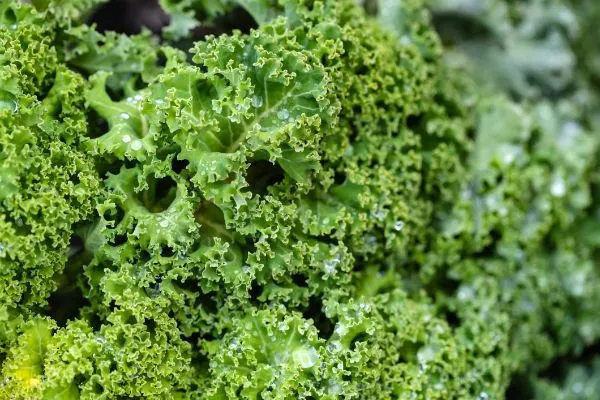
- Botanical name: Brassica oleracea
- Sun Requirements: 6-8 hours of full sun per day
- Soil Type: Rich, well-drained soil
Green beans and kale make great companions in the garden. Kale’s nutrient-rich soil can help to improve the soil quality and also provide shade to the beans, preventing soil dryness and weed growth. Kale is also pest-resistant, which can protect green beans from pests.
11. Leeks
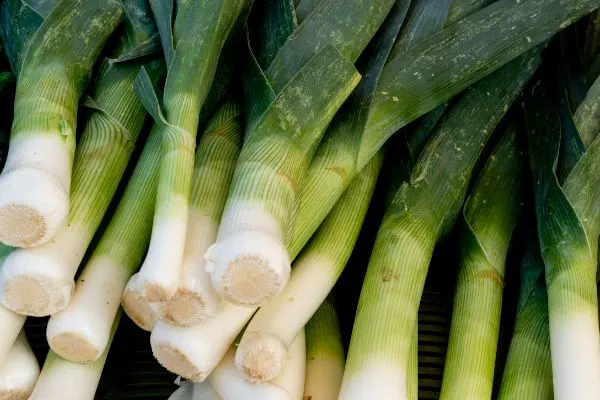
- Botanical name: Allium ampeloprasum
- Sun Requirements: 6-8 hours of full sun per day
- Soil Type: Well-drained, fertile soil
Leeks make great companions for green beans as they can deter pests like carrot flies, onion maggots, and aphids. Their shallow roots do not compete with the beans for nutrients, and they add organic matter to the soil, improving its structure and nutrient levels. Additionally, leeks can repel pests and attract beneficial insects, making them a valuable addition to any garden.
12. Lettuce
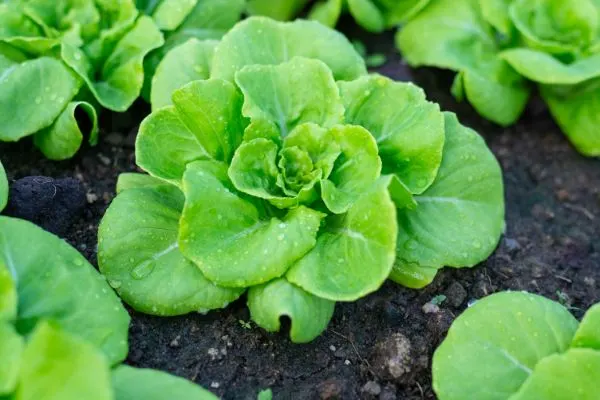
- Botanical name: Lactuca sativa
- Sun Requirements: 4-6 hours of full sun per day
- Soil Type: Well-drained, fertile soil
Lettuce is a splendid companion to green beans, as it helps to shade them and avoid soil dryness and weed growth. Being a fast-growing plant with shallow roots, lettuce won’t steal nutrients from green beans. It also functions as a cover crop for soil protection when beans are developing.
13. Mustard
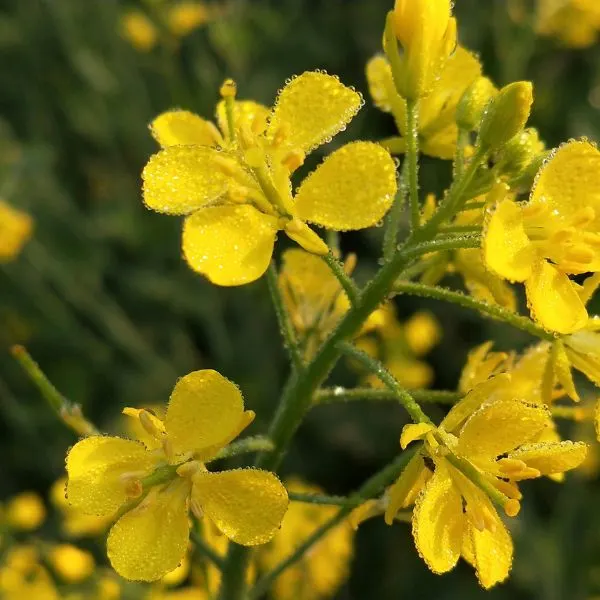
- Botanical name: Brassica juncea
- Sun Requirements: 6-8 hours of full sun per day
- Soil Type: Well-drained, fertile soil
Mustard is a companion plant for green beans, as it can help to reduce weed growth and repel pests such as aphids, flea beetles, and cabbage worms. It is nutrient-rich, providing organic matter and essential minerals, which can improve soil quality. Mustard is a fast-growing plant, so it can be used as a quick cover crop to protect the soil while green beans are still growing.
14. Parsnip
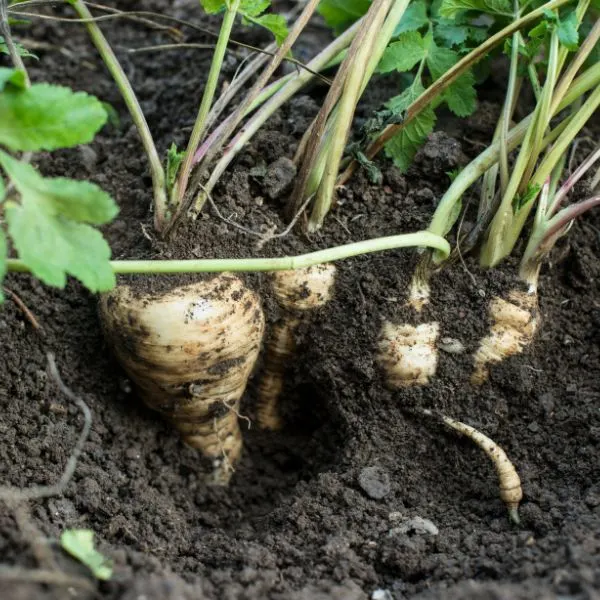
- Botanical name: Pastinaca sativa
- Sun Requirements: 6-8 hours of full sun per day
- Soil Type: Well-drained, fertile soil
Parsnips are a favorable companion to green beans as they promote soil aeration, which makes it more accommodating for bean roots to grow. Parsnips can also attract beneficial insects such as lacewings and ladybugs, which can help to control pests that can harm green beans.
15. Peas
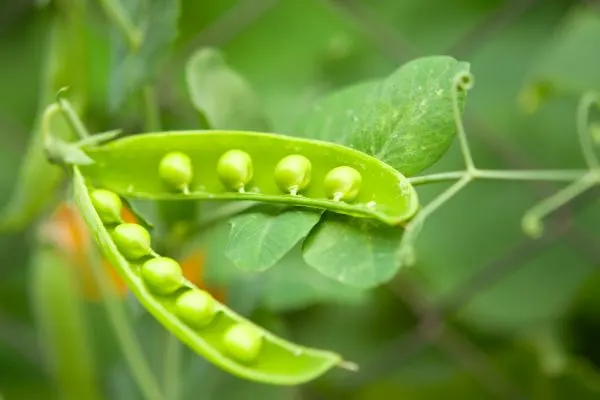
- Botanical name: Pisum sativum
- Sun Requirements: 6-8 hours of full sun per day
- Soil Type: Well-drained, fertile soil
Green beans and peas are beneficial companions as peas can fix nitrogen in the soil, an essential nutrient for the growth of green beans. This process helps green beans grow healthily by converting nitrogen from the air and storing it in their roots. Moreover, peas can improve soil structure and attract beneficial insects, which can help control pests.
16. Potatoes
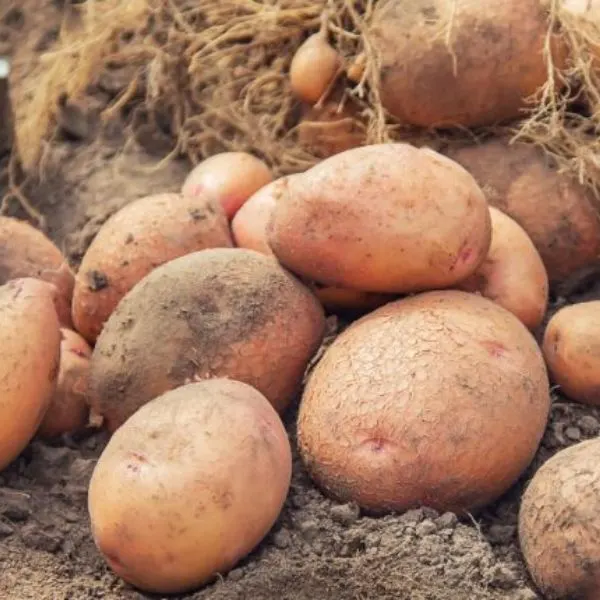
- Botanical name: Solanum tuberosum
- Sun Requirements: 6-8 hours of full sun per day
- Soil Type: Well-drained, fertile soil
Potatoes, the dependable tubers, have become known as green beans’ trusty partner. They repel pests such as Colorado potato beetles and flea beetles, supplement soil with organic matter, and hinder weed growth. However, caution must be taken to not plant them too closely together as both are vulnerable to blight. Let us celebrate this symbiotic partnership and hope for many successful harvests.
17. Pumpkins
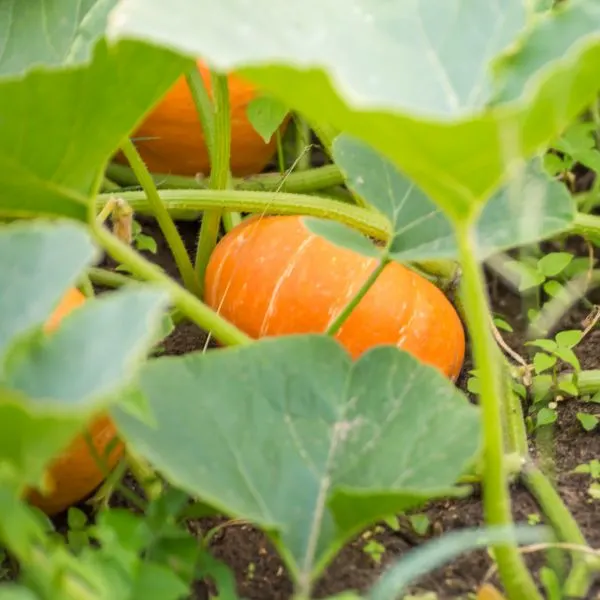
- Botanical name: Cucurbita pepo
- Sun Requirements: 6-8 hours of full sun per day
- Soil Type: Rich, well-drained soil
Pumpkins, the great orange giants of the garden, have a surprising kinship with green beans. These two plants create a utopia that fosters their mutual growth. The expansive leaves of the pumpkin plants shade the soil, generating a cool and humid environment that inhibits the beans from shriveling up. Meanwhile, the prickly armor of the pumpkin provides a natural fortress, safeguarding against pests and intruders. And what do the beans receive in return? They act as a faithful friend, maintaining the soil’s buoyancy and air circulation, granting the pumpkin’s roots a chance to thrive.
18. Radishes

- Botanical name: Raphanus sativus
- Sun Requirements: 6-8 hours of full sun per day
- Soil Type: Well-drained soil, rich in organic matter
Radishes make for great companions to green beans, thanks to their natural pest-repelling properties. These root vegetables release chemicals that ward off insects, such as cucumber beetles and squash bugs. Radishes also improve soil structure, breaking up compacted earth and making it easier for green beans to thrive. In return, green beans provide shade for the radishes, helping them to stay cool in hot weather.
19. Rhubarb

- Botanical name: Rheum rhabarbarum
- Sun Requirements: Full sun to partial shade (6-8 hours of full sun per day)
- Soil Type: Well-draining soil, rich in organic matter
Rhubarb, the unsung hero of companion planting, can be a boon to green beans. Its deep roots help break up compacted soil, allowing for better drainage and increased nutrient uptake. Rhubarb also releases chemicals that deter pests, such as Japanese beetles and aphids, which can cause havoc in green bean patches. The beans provide much-needed shade for rhubarb, keeping the soil cooler and preventing the plant from bolting. Plus, rhubarb’s leaves can be used to make a natural insecticide to further protect both plants. A match made in the garden!
20. Spinach
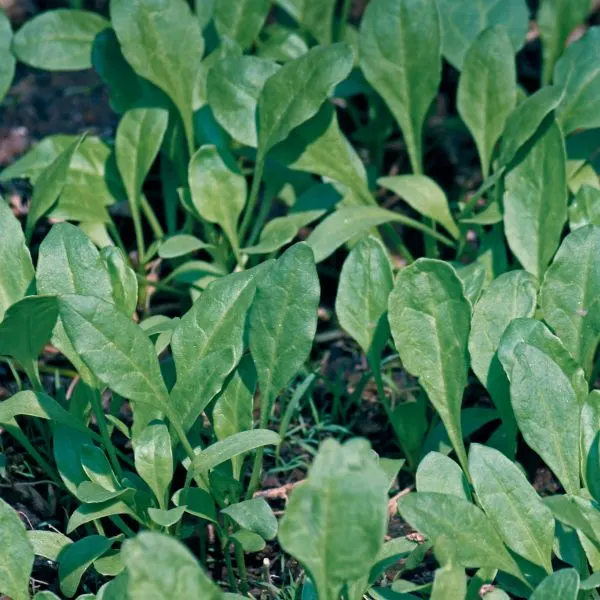
- Botanical name: Spinacia oleracea
- Sun Requirements: Partial shade (3-4 hours of direct sun per day)
- Soil Type: Well-draining soil, high in nitrogen
Spinach and green beans are beneficial companions as spinach can deter pests like spider mites and aphids from damaging the beans. Furthermore, spinach enriches soil health by providing organic matter and nutrients during decomposition. Conversely, green beans offer shade to spinach, which thrives in cooler soil conditions. With this mutualistic relationship, spinach and green beans will flourish together and provide bountiful yields.
21. Squash
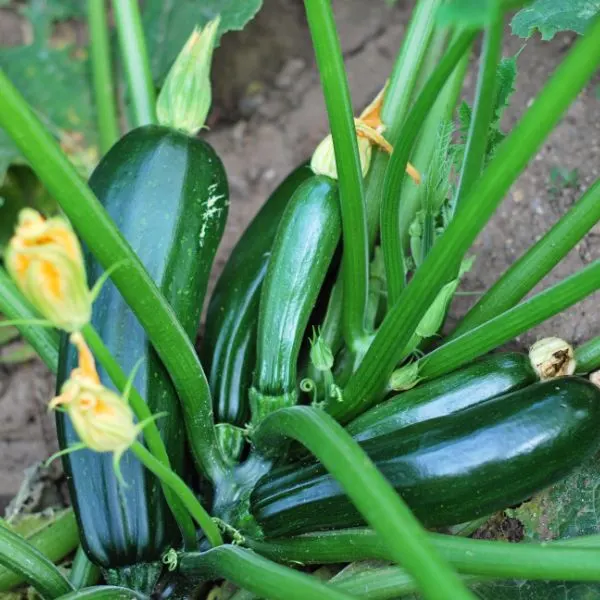
- Botanical name: Cucurbita spp.
- Sun Requirements: Full sun (6-8 hours of direct sun per day)
- Soil Type: Well-draining soil, rich in organic matter
Squash and green beans make great companions as the former can repel harmful pests that threaten the latter, such as cucumber beetles and squash bugs. The sprawling growth of squash plants offers a two-pronged benefit to the beans, creating a cool, moist microclimate in which they can thrive while also shading the soil from the sun, helping to reduce moisture loss. In return, the beans provide support for the squash, helping it to grow upright and strong and promoting a bountiful yield. This symbiotic relationship between squash and beans is truly a remarkable example of nature’s intricate web.
22. Swiss Chard

- Botanical name: Beta vulgaris subsp. cicla
- Sun Requirements: Full sun to partial shade (4-6 hours of direct sun per day)
- Soil Type: Well-draining soil, rich in organic matter
Swiss chard, a shallow-rooted plant, makes for an excellent companion to green beans by deterring pests that may harm the beans, such as aphids, spider mites, and Japanese beetles. In addition, Swiss chard doesn’t compete with green beans for soil nutrients and water, allowing them to coexist peacefully. Swiss chard’s presence also helps to keep the soil cool and moist by providing shade, which is beneficial for the growth of green beans.
23. Tomatoes

- Botanical name: Solanum lycopersicum
- Sun Requirements: Full sun (6-8 hours of direct sun per day)
- Soil Type: Well-draining soil, rich in organic matter
When it comes to companion planting, tomatoes, and green beans are the ultimate dynamic duo! These plants have different nutrient requirements, which makes them great growing companions. Tomatoes provide the shade that green beans need to keep their roots cool and moist, while green beans can climb up the natural trellis provided by the tomato plant. This allows for efficient use of garden space while also promoting optimal growth and health for both plants. So, if you’re looking to maximize your garden’s potential, consider pairing these two plants together for a winning combination.
24. Zucchini
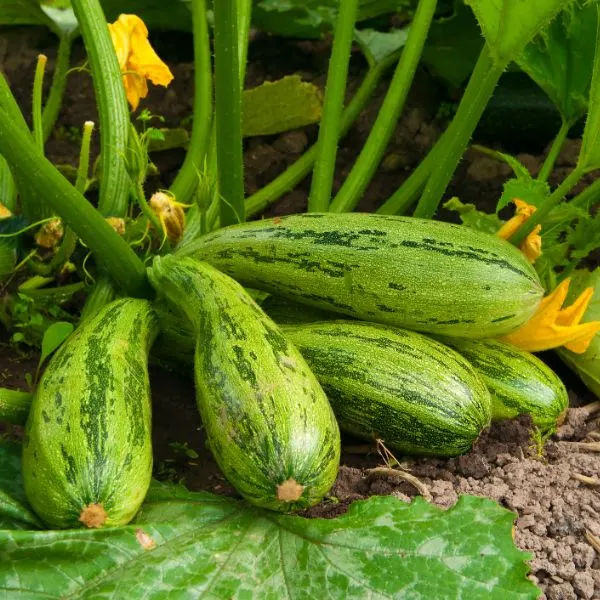
- Botanical name: Cucurbita pepo
- Sun Requirements: Full sun (6-8 hours of direct sun per day)
- Soil Type: Well-draining soil, rich in organic matter
Zucchini and green beans make a great pair as companion plants due to their mutual benefits. As heavy feeders, they thrive in nutrient-rich soil, and their differing root systems allow them to coexist without fighting for resources. Zucchini also provides shade, ensuring the soil remains cool and damp – an environment in which green beans flourish. Plus, zucchini attracts pollinators such as bees and butterflies, which aids the pollination of green bean flowers. All in all, a perfect partnership for two crops that complement each other so well.
Fruits
25. Strawberries
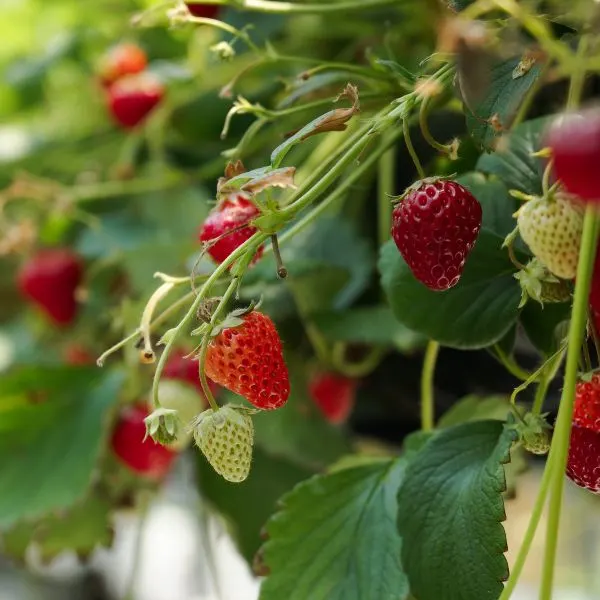
- Botanical name: Fragaria x ananassa
- Sun Requirements: Full sun (6-8 hours of direct sun per day)
- Soil Type: Well-draining soil, rich in organic matter
Strawberries may seem like an unusual companion plant for green beans, but they can actually be a great match. Planting strawberries at the base of green bean plants can provide partial shade, which strawberries thrive in. Furthermore, strawberries have shallow roots that can help prevent soil erosion and improve soil structure. They also attract pollinators, which can help improve the pollination of green bean flowers. It’s important to be cautious, though, since strawberries are vulnerable to the same pests and diseases as green beans, and it’s necessary to avoid spreading these issues.
Herbs
26. Basil
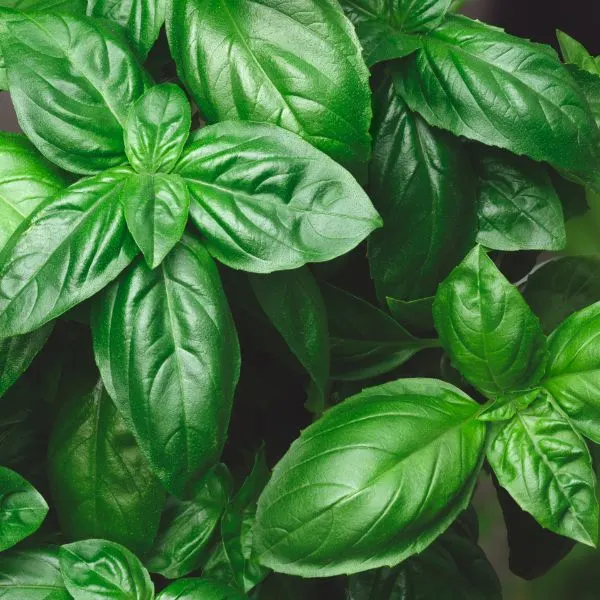
- Botanical name: Ocimum basilicum
- Sun Requirements: Full sun (6-8 hours of direct sun per day)
- Soil Type: Well-draining soil, rich in organic matter
In the horticultural world, basil and green beans are a dynamic duo. Basil can drive away pests like aphids and spider mites thanks to the pungent oils it exudes. These oils also mask the scent of green bean plants, making them unattractive to hungry insects. Furthermore, basil’s shallow roots make it a perfect companion, as it won’t compete with green beans for water and nutrients. And the cherry on top? Both plants have similar sun and water preferences, allowing for seamless growth together. A win-win situation for both crops!
27. Catnip
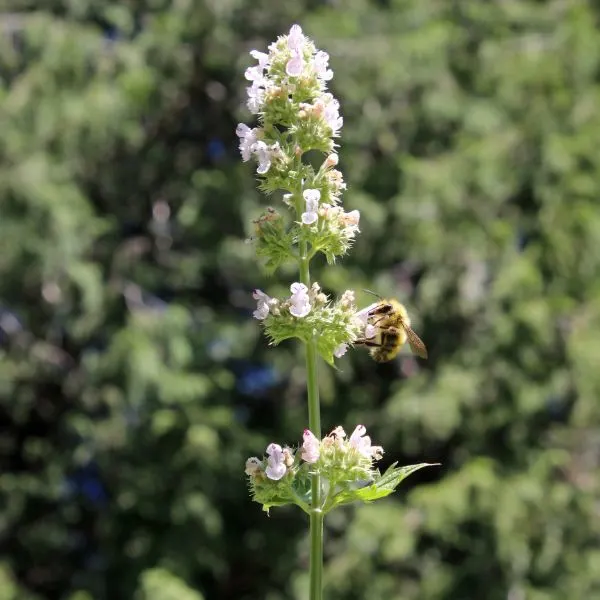
- Botanical name: Nepeta cataria
- Sun Requirements: Full sun to partial shade (4-6 hours of direct sun per day)
- Soil Type: Well-draining soil, rich in organic matter
Catnip can be a surprising but effective companion plant for green beans. This amazing herb can deter pests that threaten green beans’ growth, such as aphids, flea beetles, and squash bugs. Catnip is also attractive to beneficial insects like lacewings and ladybugs, which can help control these pests naturally. Besides, catnip has deep roots that can improve soil structure and nutrient availability, benefiting both plants. Planting catnip with green beans is a smart and natural way to keep pests at bay and promote soil health.
28. Chamomile
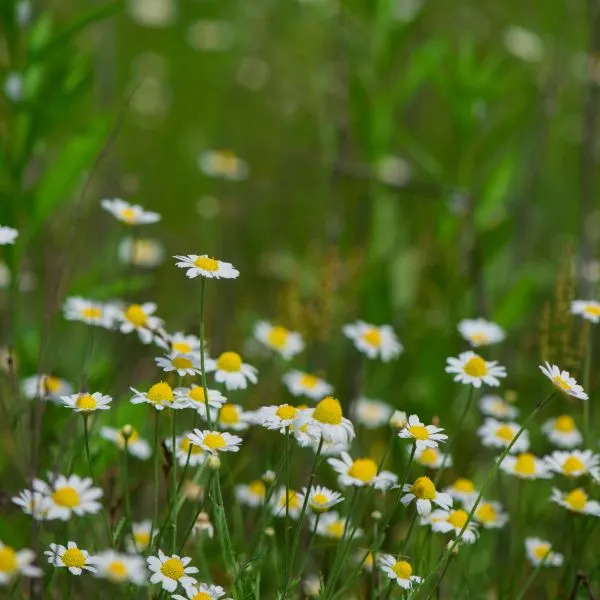
- Botanical name: Matricaria chamomilla
- Sun Requirements: Full sun to partial shade (4-6 hours of direct sun per day)
- Soil Type: Well-draining soil, rich in organic matter
Chamomile is an amazing companion for green beans because it entices an assortment of helpful insects, such as hoverflies and parasitic wasps, which can help control pests such as aphids and caterpillars. Besides, chamomile has a superficial root system, which allows it to coexist with green beans without causing competition for soil nutrients and water. Furthermore, chamomile is thought to have a relaxing effect on plants, which can decrease stress and enhance overall plant health, making it an excellent companion for green beans.
29. Cilantro
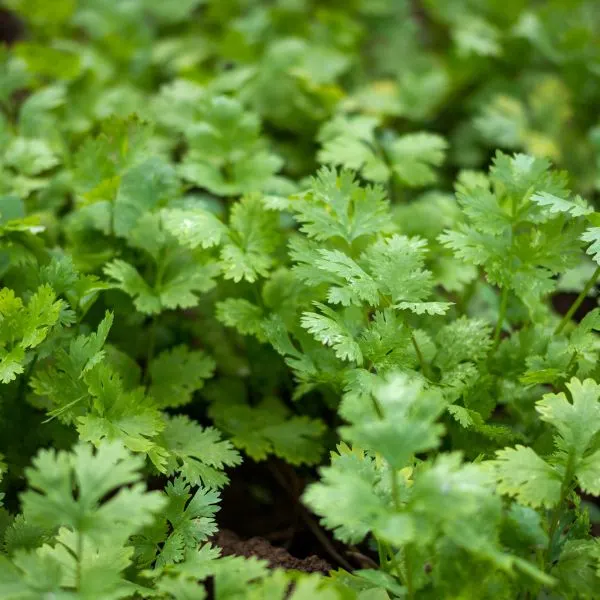
- Botanical name: Coriandrum sativum
- Sun Requirements: Full sun to partial shade (4-6 hours of direct sun per day)
- Soil Type: Well-draining soil, rich in organic matter
Cilantro is an outstanding comrade of green beans because it pulls in beneficial bugs like parasitic wasps that ravage pesky aphids and spider mites. Moreover, deep-rooted cilantro works wonders in promoting soil structure and nutrient availability for both crops. Finally, the two plants are water buddies with similar sunlight demands, making it easy to grow them together.
30. Dill
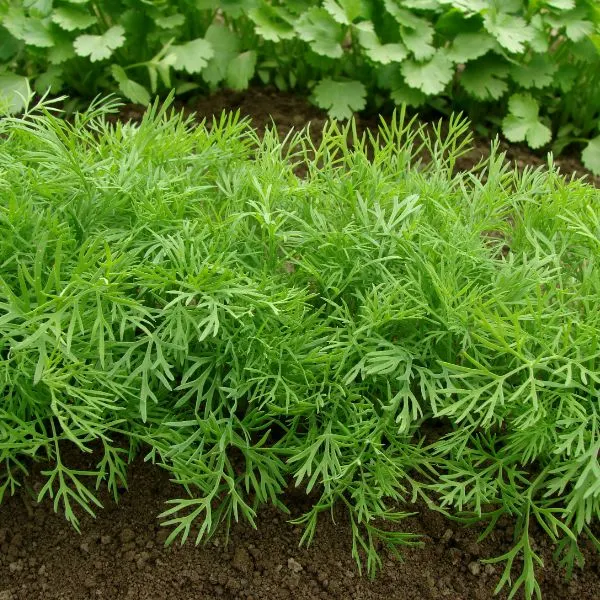
- Botanical name: Anethum graveolens
- Sun Requirements: Full sun (6-8 hours of direct sun per day)
- Soil Type: Well-draining soil, rich in organic matter
Dill is an exceptional companion to green beans because of its pest-repelling properties, specifically for aphids and spider mites. Dill’s power to attract beneficial insects like ladybugs and hoverflies is also an added benefit for green beans’ overall health. Moreover, Dill can be grown alongside green beans or planted nearby in the garden, whichever way suits you best. The delicate yellow flowers and feathery leaves of Dill make it an alluring addition to any garden, enhancing its aesthetic appeal.
31. Fennel
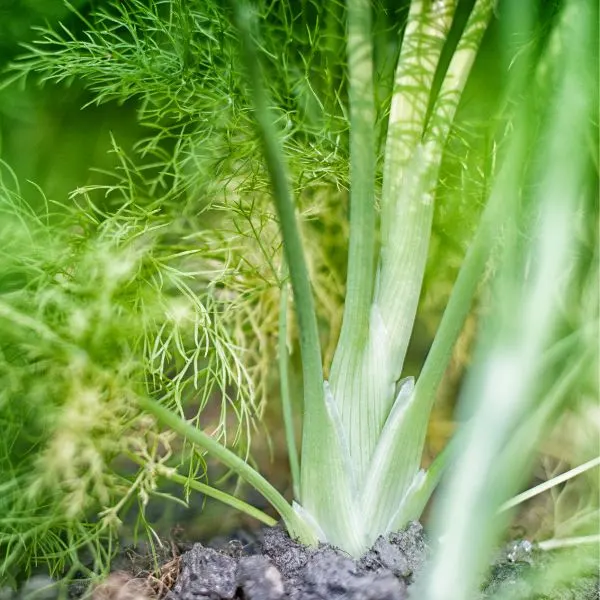
- Botanical name: Foeniculum vulgare
- Sun Requirements: Full sun (6-8 hours of direct sun per day)
- Soil Type: Well-draining soil, rich in organic matter
Fennel, a herb with a sweet and anise-like flavor, is a great companion plant for green beans. It attracts a variety of beneficial insects, such as parasitic wasps, lacewings, and ladybugs, that can help control common garden pests like aphids and mites. In addition, fennel produces a chemical that repels slugs and snails, which can be a huge problem for green beans. However, fennel is known to be invasive and can take over the garden if not contained, so it’s important to plant it in a separate area or in a container. Overall, fennel is a fantastic plant to include in any garden, providing both culinary and pest control benefits.
32. Fenugreek
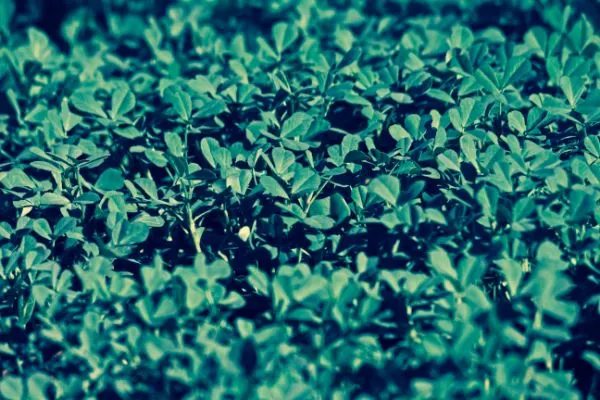
- Botanical name: Trigonella foenum-graecum
- Sun Requirements: Full sun to partial shade (4-6 hours of direct sun per day)
- Soil Type: Well-draining soil, rich in organic matter
Fenugreek, an often-overlooked legume, can be an incredible companion plant for green beans. It’s a cover crop that possesses unique nitrogen-fixing properties, allowing it to improve soil fertility and benefit the growth of green beans. Moreover, fenugreek attracts a plethora of beneficial insects, such as bees, butterflies, and predatory insects, which can help control pests and improve the overall health of the garden. The beautiful and fragrant fenugreek plant can be grown alongside green beans, creating an attractive and functional companion planting scheme.
33. Oregano
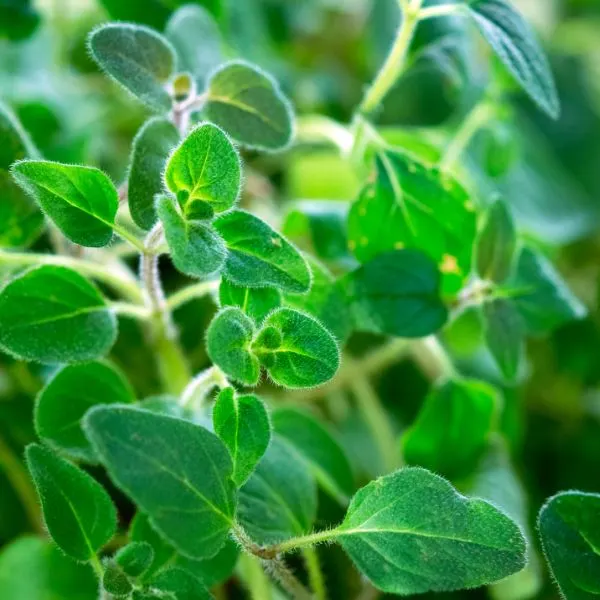
- Botanical name: Origanum vulgare
- Sun Requirements: Full sun to partial shade (4-6 hours of direct sun per day)
- Soil Type: Well-draining soil, rich in organic matter
Oregano, a herb with a distinctive aroma and taste, can provide a range of benefits to green beans when grown together. Apart from its culinary uses, oregano is also an excellent companion plant that attracts beneficial insects like hoverflies and predatory wasps that help to control pests. It is suitable for growing in pots or planted near green beans in the ground. The plant can be an attractive addition to any garden while also offering a range of advantages for green beans.
34. Rosemary

- Botanical name: Rosmarinus officinalis
- Sun Requirements: Full sun (6-8 hours of direct sun per day)
- Soil Type: Well-draining soil, rich in organic matter
Rosemary is a beneficial herb for green beans. Its strong scent repels pests like bean beetles and cabbage moths, making it a great companion plant. Rosemary can be planted alongside green beans or in a nearby container. Its evergreen foliage, and woody stems make it an attractive addition to any garden.
35. Summer Savory
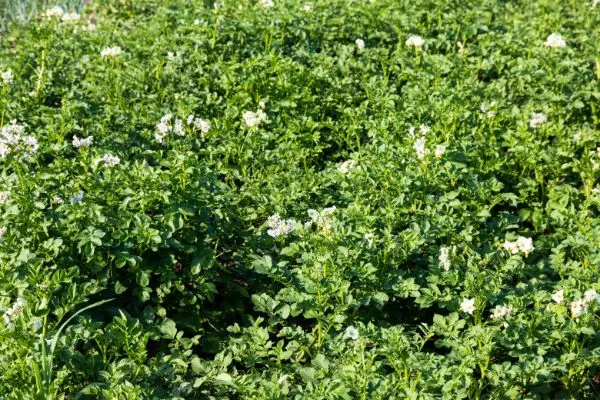
- Botanical name: Satureja hortensis
- Sun Requirements: 6-8 hours of full sun per day
- Soil Type: Well-drained soil, average fertility
Summer savory is an excellent companion plant for green beans due to its pest-repelling abilities, specifically against bean beetles, and its attraction to beneficial insects like parasitic wasps. Not only that, but summer savor can also enhance the growth and taste of green beans, making them a fantastic addition to any garden.
Flowers
36. Cosmos
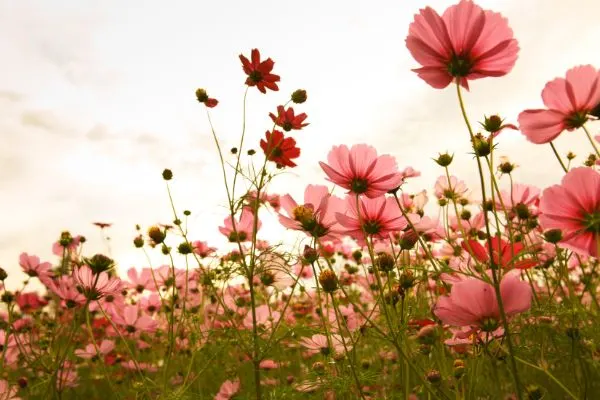
- Botanical name: Cosmos bipinnatus
- Sun Requirements: 6-8 hours of full sun per day
- Soil Type: Well-drained soil, average fertility
Cosmos is a valuable companion for green beans as it attracts predatory insects that feed on pests like aphids. It also provides shade and acts as a living mulch, conserving soil moisture and nutrients.
37. Marigolds
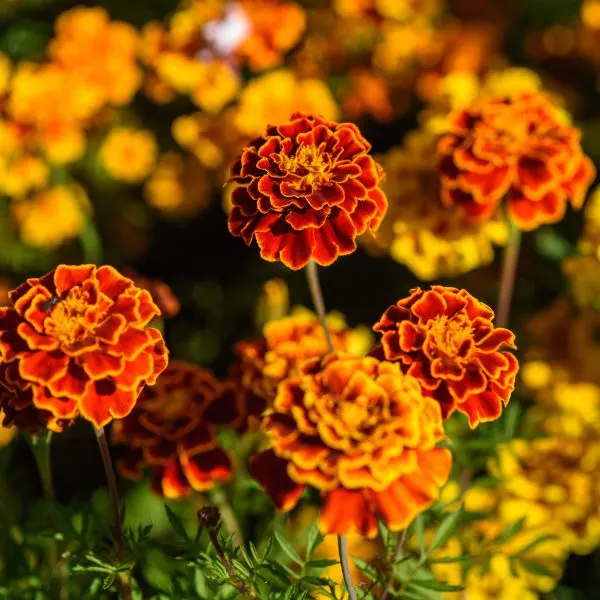
- Botanical name: Tagetes spp.
- Sun Requirements: Full sun (6-8 hours of direct sunlight per day)
- Soil Type: Well-drained soil, preferably loamy or sandy, with a pH between 6.0 and 7.0.
Marigolds are effective in repelling pests, particularly bean beetles, whiteflies, and nematodes, and attracting beneficial insects, such as ladybugs, that feed on these pests. Furthermore, marigolds improve soil health by suppressing harmful nematodes and adding organic matter when incorporated into the soil.
38. Sweet Alyssum
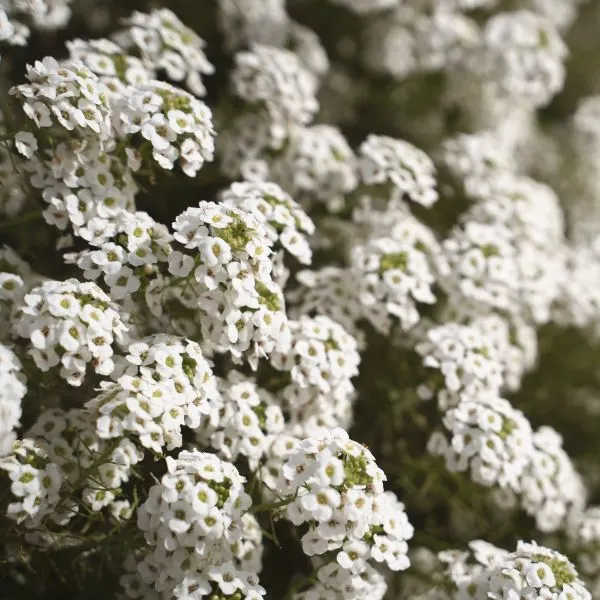
- Botanical name: Lobularia maritima
- Sun Requirements: Full sun to partial shade (4-6 hours of direct sunlight per day)
- Soil Type: Well-drained soil, preferably fertile and moist, with a pH between 6.0 and 7.5.
Sweet Alyssum, a flowering plant, attracts beneficial insects like parasitic wasps and hoverflies that control aphids and caterpillars harmful to green beans. It also helps to suppress weed growth and soil erosion. Sweet Alyssum grows best in full sun to partial shade and well-drained soil.
Trees
39. Apricot Trees

- Botanical name: Prunus armeniaca
- Sun Requirements: Full sun (6-8 hours of direct sunlight per day)
- Soil Type: Well-drained soil, preferably sandy or loamy, with a pH between 6.0 and 7.0.
Apricot trees provide shade to green beans in summer and attract pollinators such as bees, increasing the yield of green beans. Their deep roots help improve soil structure and drainage. Apricot trees prefer well-drained soil and full sun.
NOTE: When it comes to planting pole beans, steer clear of beets and Brassica family members like kale, broccoli, cabbage, and cauliflower, as they can interfere with pole bean growth. Similarly, avoid planting pole beans near sunflowers due to competition for sunlight.
Bad Companion Plants For Green Beans
1. Alliums
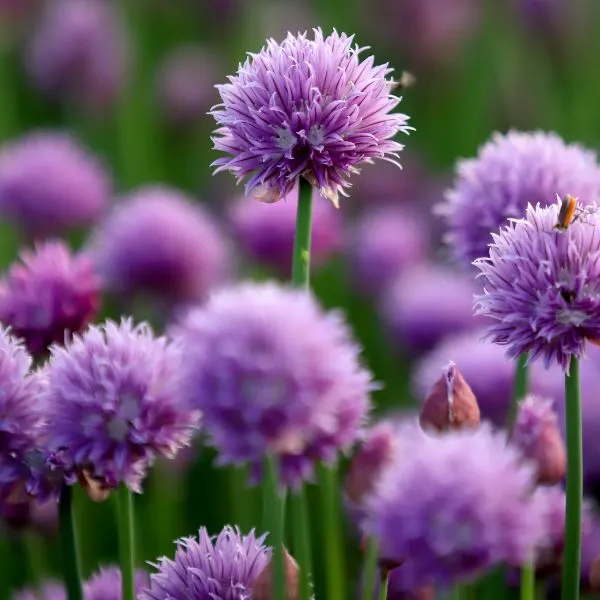
Avoid planting alliums, such as onions, garlic, and shallots, alongside green beans. These plants release allelopathic compounds that can negatively impact the growth and yield of green beans. The compounds are exuded through the roots, affecting the soil and other plants nearby. This can cause stunted growth and death of green beans. It is best to keep alliums away from the vicinity of green beans.
2. Beets
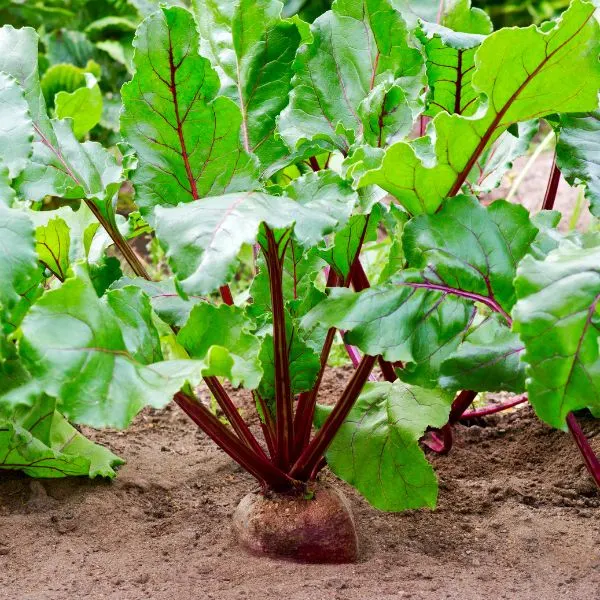
Beets and green beans should not be planted together due to their similar nutrient needs and beet’s release of betaine, a toxic compound that inhibits the growth of green beans. When planted together, they can compete for resources like water and nutrients, leading to stunted growth and reduced yield in green beans. Therefore, it’s best to avoid planting beets as a companion plant for green beans.
3. Fennel
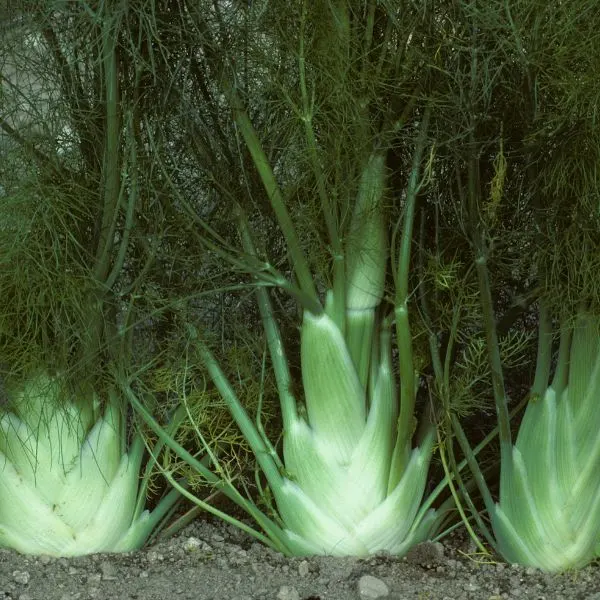
Beware of fennel when planting green beans! This plant produces chemicals that can hinder the growth of other plants, including green beans. These chemicals can negatively affect the yield and growth of green beans, which can be a real bummer. Additionally, fennel and green beans share similar nutrient requirements, which can lead to fierce competition for resources like water and nutrients. So, it’s best to avoid planting fennel with your green beans to ensure a bountiful harvest.
4. Kohlrabi

Kohlrabi may not directly harm green beans, but it still poses a risk to their growth. Being part of the brassica family, kohlrabi can lure in pests and diseases that can harm both plants.
Furthermore, both kohlrabi and green beans have comparable nutrient needs, and planting them together could lead to resource competition, ultimately hampering the growth of both. It is advisable to keep these two plants at a distance from each other to ensure optimal growth.
5. Peppers
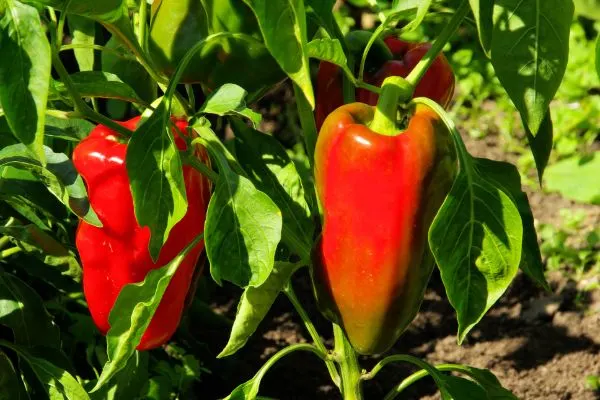
Peppers are a plant that can have negative consequences when grown near green beans. This is due to the fact that peppers release a chemical compound known as solanine, which can be detrimental to other plants. Solanine can obstruct the growth of green beans, resulting in reduced yield, stunted growth, and even death of the plant.
The effects of solanine are due to its ability to inhibit enzymes in the plant’s metabolic pathways. This can negatively impact the plant’s ability to absorb nutrients and water, leading to poor growth and development.
6. Sunflowers
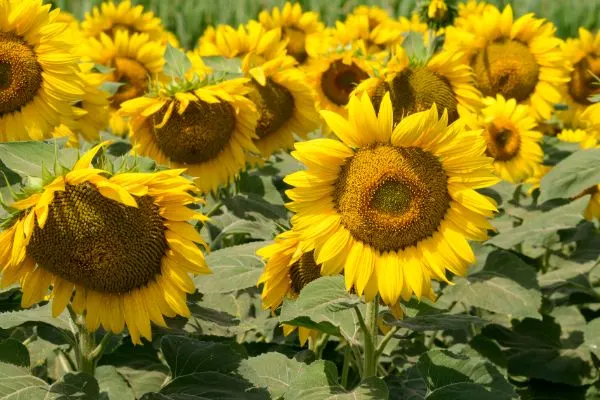
Sunflowers can be counterproductive when planted alongside green beans. The sunflowers release a chemical substance known as allelopathic compounds, which can negatively affect other plants, including green beans. The root system secretes these compounds, which can interfere with the soil and other plants in the vicinity. This interference leads to stunted growth, poor yield, and even death of the green beans.
7. Sword Lillies
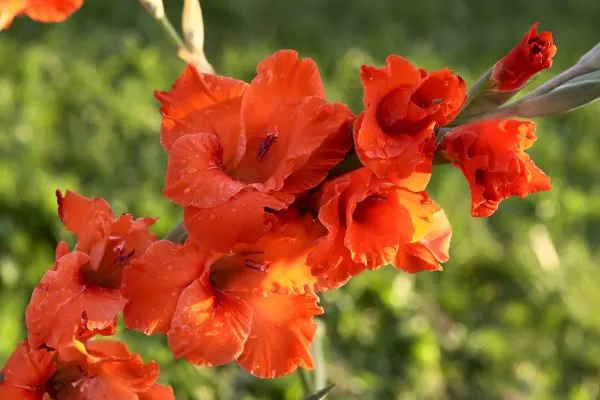
Intricately entangled with nature’s mysterious ways, sword lilies, or gladiolus, may wield their botanical powers to the detriment of green beans when planted in close proximity. Sword lilies harbor an arsenal of chemical weaponry, notably gladiolus acid, which can be deployed to inhibit the growth of other plants. Green beans are not immune to these chemical attacks and may suffer from stunted growth, reduced yield, or even death. The competition for resources, such as nutrients and water, between sword lilies and green beans may exacerbate the situation and further impede the growth of both plants.
FAQs
How close should you plant green beans?

Most green beans grow best when planted 1 inch deep, 6 inches apart in rows, and 3 feet between rows. After planting, firm the seedbed using your hand, a gardening tool, or a cultipacker.
Do green beans like sun or shade?
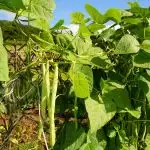
Green beans also require full sun — a minimum of six hours of direct sunlight daily. Green beans may also be purchased as seedlings, or you can start them yourself indoors.
Do green beans need to climb?
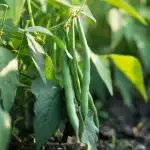
All green beans like a bit of support, but pole beans grow much taller and really need trellis or poles to climb on to get a successful harvest. Both types of beans are from the wax bean family and are easy to grow.
Do green beans like wet or dry soil?

Maintain a wet but not saturated soil surface; allow the soil surface to dry up to a half-inch deep between waterings. Beans require roughly 1 inch of water each week on average. To produce the highest yield and well-shaped pods, keep the beans wet during and after bloom.
Do green beans need manure?

Maintain a wet but not saturated soil surface; allow the soil surface to dry up to a half-inch deep between waterings. Beans require roughly 1 inch of water each week on average. To produce the highest yield and well-shaped pods, keep the beans wet during and after bloom.
What month do you plant beans?
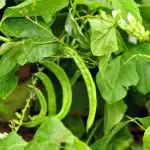
Beans may be planted in the spring or fall wherever you reside. The most significant aspect of spring is that frost has departed. Planting in the fall should be done 10-12 weeks before the earliest estimated frost date. It also can’t be too hot.
Wrapping up
Being a Legume, Green beans can be a fun and rewarding vegetable to grow in your garden. These warm-season crops need plenty of sunlight and warmth to thrive, so choose a sunny location and wait until after the frost season to plant. It’s also important to use well-draining soil enriched with organic matter to give your plants the best possible start. With these basic tips in mind, you can enjoy a successful harvest of sweet and delicious green beans.
More plant stuff
